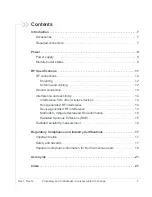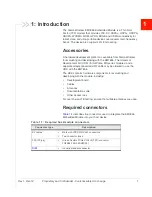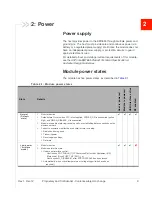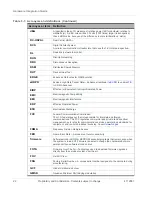
Hardware Integration Guide
12
Proprietary and Confidential - Contents subject to change
4112881
RF connections
When attaching antennas to the module:
•
Use I-PEX mating connectors (model I-PEX MHF-A13) to attach antennas to
the module’s connection points. (The other end of the antenna cables will use
a host-dependent connector type — A13 connectors are not required.)
•
Match coaxial connections between the module and the antenna to 50
.
•
Minimize RF cable losses to the antenna; the recommended maximum cable
loss for antenna cabling is 0.5 dB.
•
To ensure best thermal performance, if possible use the mounting holes to
attach (ground) the device to a metal chassis.
Note: If the antenna connection is shorted or open, the modem will not sustain permanent
damage.
Shielding
The module is fully shielded to protect against EMI and must not be removed.
Antenna and cabling
When selecting the antenna and cable, it is critical to RF performance to match
antenna gain and cable loss.
GSM 1800
Tx: 1710–1785 MHz
Rx: 1805–1880 MHz
GSM 1900
Tx: 1850–1910 MHz
Rx: 1930–1990 MHz
Table 3-4: CDMA frequency band support
Band
Frequencies
Band Class 0
(Cellular 800 MHz)
Tx: 824–849 MHz
Rx: 869–894 MHz
Band Class 1
(PCS)
Tx: 1850–1910 MHz
Rx: 1930–1990 MHz
Band Class 10
(Secondary 800 MHz)
1
Tx: 816–824 MHz
Rx: 861–869 MHz
1.
BC10 subclasses 2 and 3 (system designator C and D) are sup-
ported
Table 3-3: GSM frequency band support (Continued)
Band
Frequencies













































